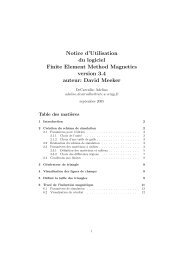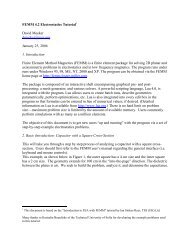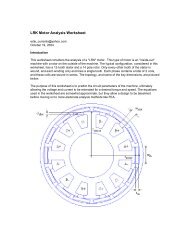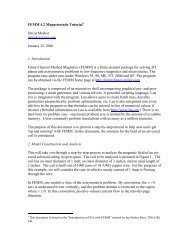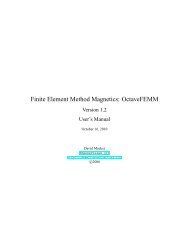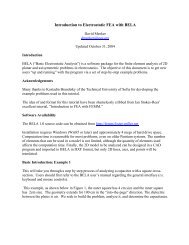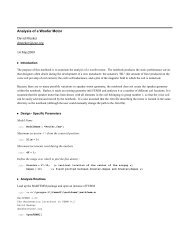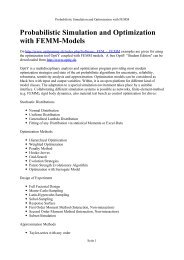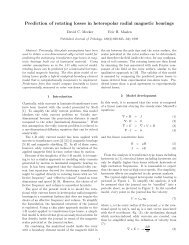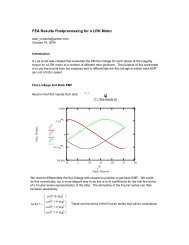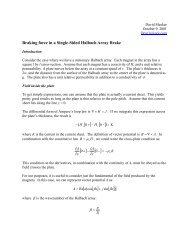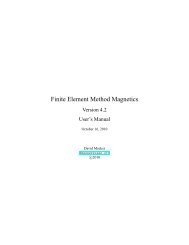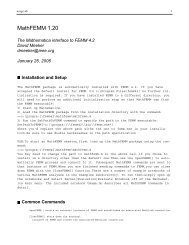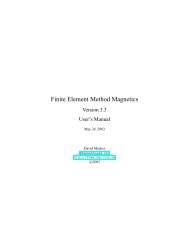1 Introduction - Finite Element Method Magnetics
1 Introduction - Finite Element Method Magnetics
1 Introduction - Finite Element Method Magnetics
You also want an ePaper? Increase the reach of your titles
YUMPU automatically turns print PDFs into web optimized ePapers that Google loves.
3.7 Definition of Properties<br />
To make a solvable problem definition, the user must identify boundary conditions, block materials<br />
properties, and so on. The different types of properties defined for a given problem are defined via<br />
the Properties selection off of the main menu.<br />
When the Properties selection is chosen, a drop menu appears that has selections for Materials,<br />
Boundary, Point, and Circuits. When any one of these selections is chosen, the dialog<br />
pictured in Figure 7 appears. This dialog is the manager for a particular type of properties. All<br />
Figure 7: Property Definition dialog box<br />
currently defined properties are displayed in the Property Name drop list at the top of the dialog.<br />
At the beginning of a new model definition, the box will be blank, since no properties have yet<br />
been defined. Pushing the Add Property button allows the user to define a new property type. The<br />
Delete Property button removes the definition of the property currently in view in the Property<br />
Name box. The Modify Property button allows the user to view and edit the property currently<br />
selected in the Property Name box. Specifics for defining Point, Segment, and Block properties<br />
are addressed in the following subsections.<br />
In general, a number of these edit boxes prompt the user for both real and imaginary components<br />
for entered values. If the problem you are defining is magnetostatic (zero frequency), enter<br />
the desired value in the box for the real component, and leave a zero in the box for the imaginary<br />
component. The reason that Femme uses this formalism is to obtain a relatively smooth transition<br />
from static to time-harmonic problems. Consider the definition of the Phasor transformation in<br />
Eq. 14. The phasor transformation assumes that all field values oscillate in time at a frequence of<br />
ω. The phasor transformation takes the cosine part of the field value and represents it as the real<br />
part of a complex number. The imaginary part represents the magnitude of the sine component,<br />
90 o out of phase. Note what happens as the frequency goes to zero:<br />
lim<br />
ω→0 (are cosωt − aim sinωt) = are<br />
Therefore, the magnetostatic (ω = 0) values are just described by the real part the specified complex<br />
number.<br />
16<br />
(16)



